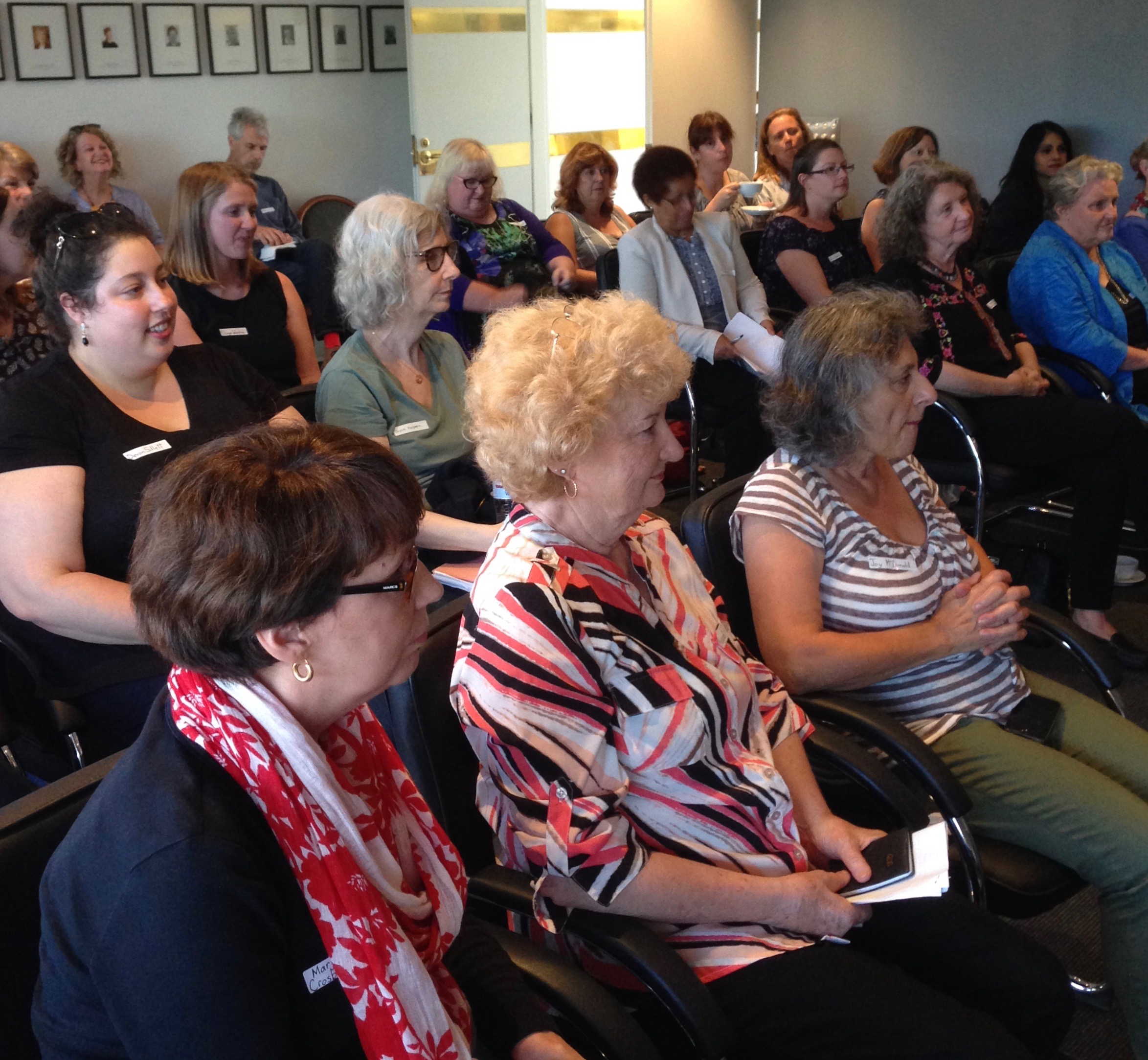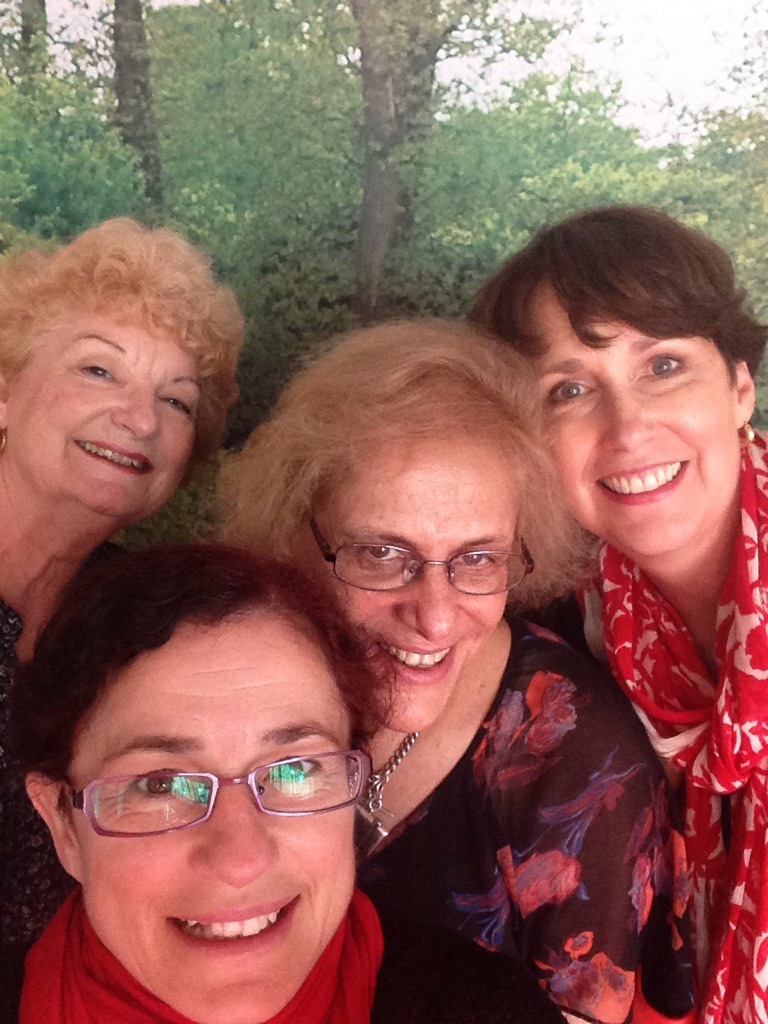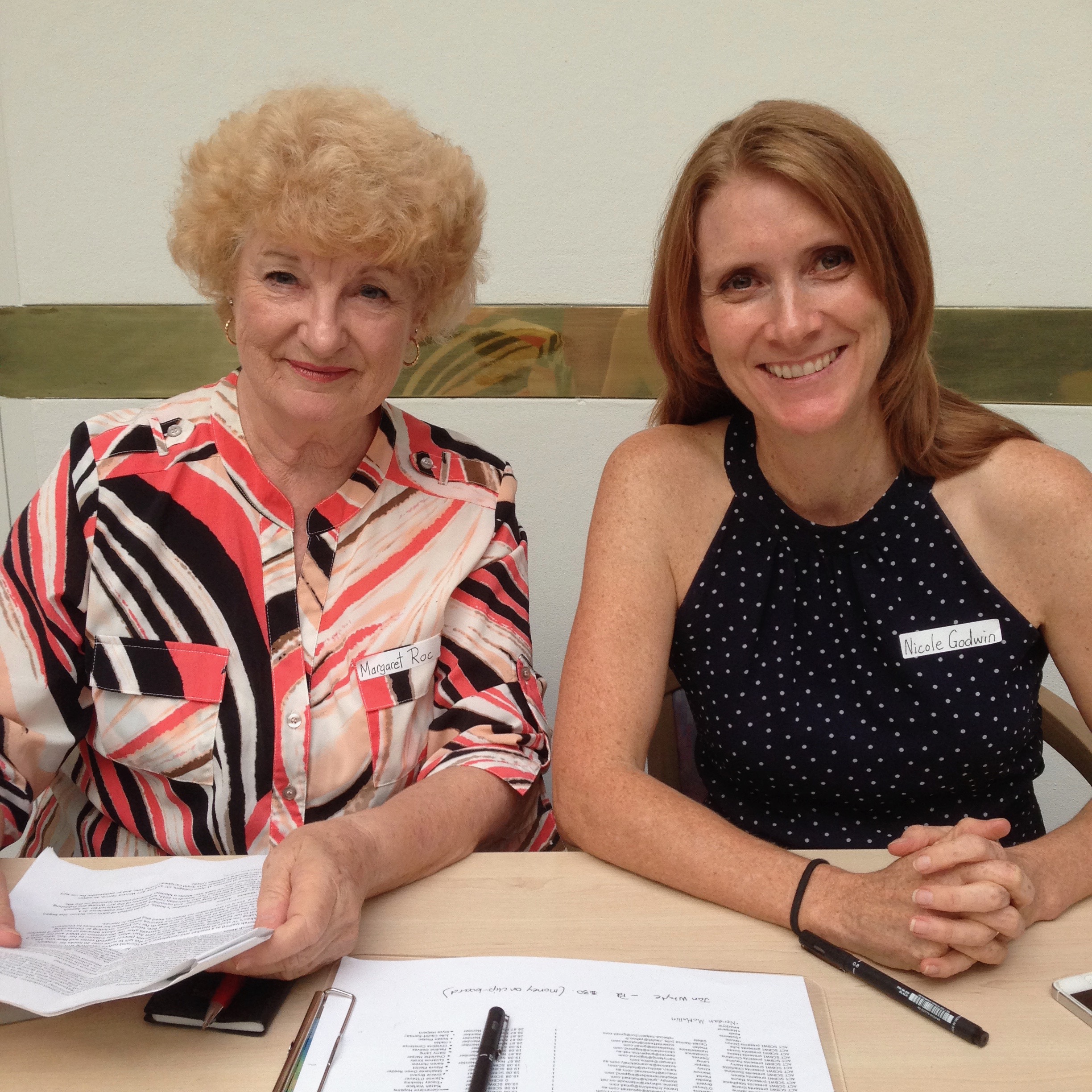SCBWI ACT Monday March 27, 2017 5-8pm
ALIA House Canberra
After Susanne Gervay regaled us with her usual lovely humour, she explained the main aims of SCBWI which is to create a community of children’s book creators and connect them to professionals in the publishing industry. She directed the audience to the international website with its opportunities, grants, awards, festivals and meetings. The site also offers a way to find other international publishing professionals.
Susan Hall, Publisher, editor and author, National Library of Australia talks about the NLAs publishing criteria and process, submissions and what they are publishing. MC Tania McCartney, author, illustrator, editor.
How did the NLA list come about?
Susan wanted to create a list for the NLA that included children’s books. It was a hard fight but one she felt very passionate about and despite some opposition, the children’s list began, firstly with 6 of her own works, but now she focuses on publishing other authors.
What is on the list?
The list includes picture books, primary books for older readers on subjects from Australian animals, astronomy and explorers. She also publishes novels, but only 1 every two years. The list is very grounded in history and uses the collection in some way. The NLA collection of images are often a starting point and can be found using TROVE and searching ‘pictures’.
How many books do you publish each year?
4-6 books.
How can people submit?
There is an online submission form. You need to include ideas for marketing, audience and how you intend to use the collection. For a picture book, they want the entire text. They are looking for original ideas that will sell and when you submit you should receive and automated reply. They receive 15-20 submissions every 3 mths. The proposals are seen by an advisory panel and focus group (teachers and parents). It needs to be presented to the committee for approval. There is a 4 month period from submission to decision. It helps if you are published but it isn’t necessary. It helps if you have a web presence and have a social media presence. Find out more about NLA Publishing here.
How well is the list doing?
There have been many reprints in the last 12 months, all of which are kids’ books. The NLA books have received awards, which is important for their standing. They have also had books on the ASO and have recently had foreign rights, which has boosted print runs which also helps cover all costs. This all adds up to creating a valuable and valued list.
Do you develop a relationship between authors and illustrators?
Yes! Initially, the illustrator is left to develop their ideas but then the author is very much brought in.
Best advice for submissions?
Be yourself and write from your heart.
Gina Newton, author and scientist, presents on how to create successful non-fiction children’s books. MC Tracey Hawkins, author.
Gina loved writing as a kid but because of her love of animas,grew up to be a scientist, but scientific writing is very sparse, sharp and pithy. Having kids, reminded her of her love of more creative writing. She first had her idea about a book on animals just as the NLA were approached about the same kind of book. With her educational background, Susan asked her to be the author.
In the creation of the book, facts are essential. Her research involved reading lots of books and field guides, talking to experts in their fields and approaching societies eg the Mammal Society of Australia. She knew how to approach them from her work as a scientist but she also asked them to fact check her work after it was written.
Tania McCartney, author, editor, illustrator talks illustration, working with text, creating your own style, medium and more. MC Nicole Godwin author.
How did you transition from author to author/illustrator?
As an author, she knew something was missing for her as a creator, so she started drawing, which she did madly as a kid. She began the 52 week challenge as a way of making her practice every week. This is a closed group of illustrators meeting online.
Tell us about your technique?
She enjoys blending traditional with digital techniques but also enjoys practicing her skills of design and layout, which helps to reduce the costs of the book and makes her more appealing to publishers.
Is having a recognisable style important?
It is important to create what you love and enjoy. For her, the 52 week challenge was a chance to experiment with technique and style. She realised in doing that, that it was important to stick to designs that made her heart sing. It is important to practice and develop your own style over time.
She believes it is important that authors and illustrators work together. As both an author and an illustrator this has helped to develop the work and create a better book. Eg her Captain book illustrated by Christina Booth was a very collaborative process, which made it richer and better.
Some advice is to not illustrate the text literally but to add extra elements to the story that aren’t in the text.
What is your best advice for creating a portfolio?
Choose drawings that show you can draw consistently, show expression and that your characters have a life inside them. Create characters who tell a story.
We finished the night with Susanne Gervay who gave an over view of the industry, publishers and SCBWI success stories and Q&A.
Thank you so much to our MCs, speakers, ALIA, James from Harry Hartog’s Bookstore and all the very talented and keen Canberrans who were part of the night. Thank you too to the Sydney SCBWI AustraliaEastNZ team, Margaret Roc, Deborah Abela, Susanne Gervay and Marjorie Crosby-Fairall for making the trip to be part of the night!
Canberra is an amazing SCBWI region and after this night it is only going to get stronger and better. Woo hoo!








